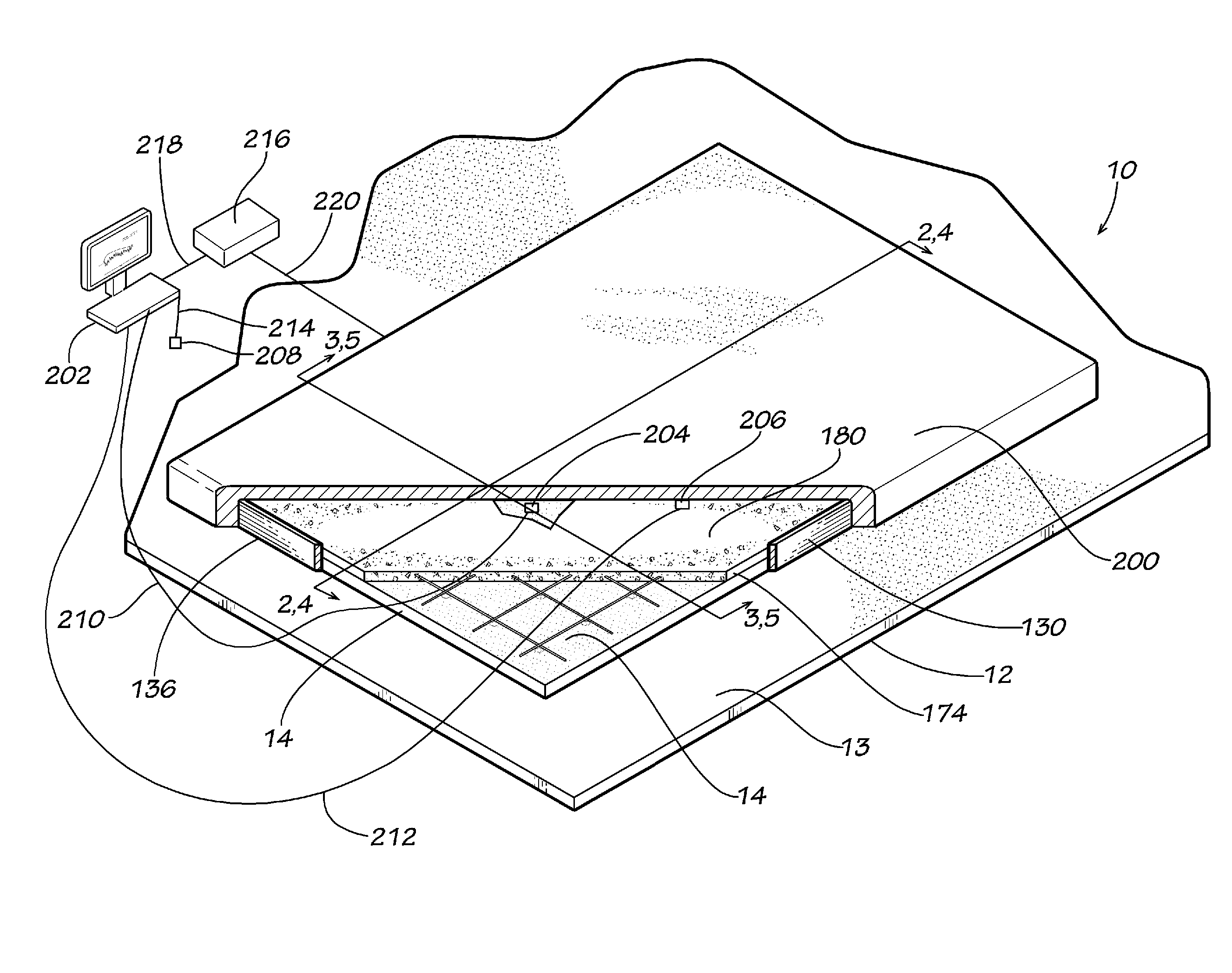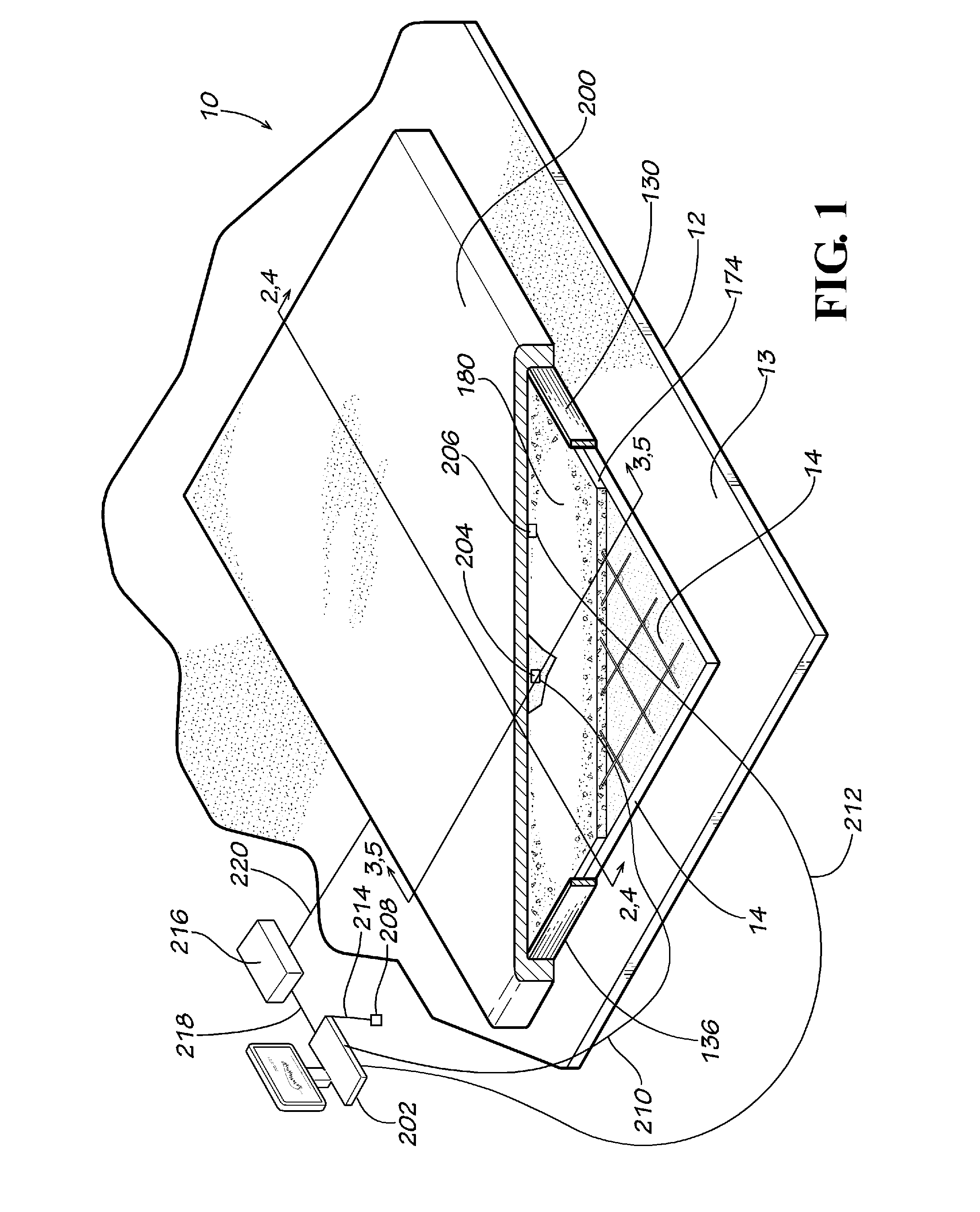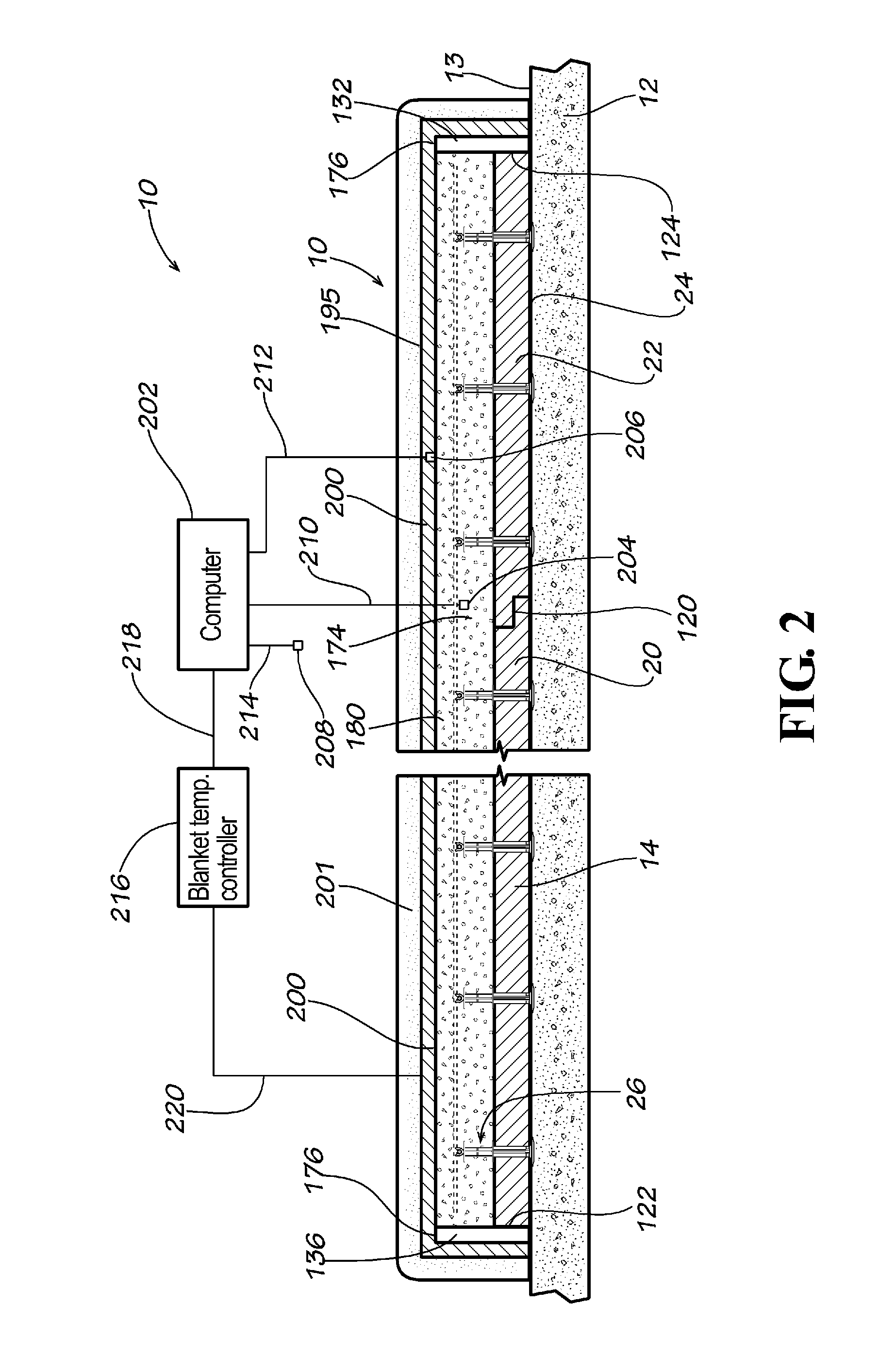Method for electronic temperature controlled curing of concrete and accelerating concrete maturity or equivalent age of precast concrete structures and objects and apparatus for same
a technology of temperature control and curing process, which is applied in the field of curing system of concrete in a concrete form or mold, can solve the problems of concrete moisture loss to the environment, slow curing process, and difficult control or prediction of the ultimate strength,
- Summary
- Abstract
- Description
- Claims
- Application Information
AI Technical Summary
Benefits of technology
Problems solved by technology
Method used
Image
Examples
Embodiment Construction
[0079]The disclosures of U.S. patent application Ser. No. 13 / 247,133 filed Sep. 28, 2011 and Ser. No. 13 / 247,256 filed Sep. 28, 2011, are both incorporated herein by reference in their entirety. FIGS. 1-5 of the present application relate to the disclosure of U.S. patent application Ser. No. 13 / 247,256 filed Sep. 28, 2011; FIGS. 6 and 7 of the present application relate to the disclosure of U.S. patent application Ser. No. 13 / 247,133 filed Sep. 28, 2011.
[0080]Referring now to the drawing in which like numbers indicate like elements throughout the several views, there is shown in FIG. 1 a disclosed embodiment of a precast insulated concrete form 10 in accordance with the present invention. The precast insulated concrete form 10 rests horizontally on a previously formed, and at least partially cured, concrete slab 12, which forms a floor of a proposed building (not shown). Alternately, the insulated concrete form 10 can be used on any solid, level, casting surface (not shown). The con...
PUM
 Login to View More
Login to View More Abstract
Description
Claims
Application Information
 Login to View More
Login to View More - R&D
- Intellectual Property
- Life Sciences
- Materials
- Tech Scout
- Unparalleled Data Quality
- Higher Quality Content
- 60% Fewer Hallucinations
Browse by: Latest US Patents, China's latest patents, Technical Efficacy Thesaurus, Application Domain, Technology Topic, Popular Technical Reports.
© 2025 PatSnap. All rights reserved.Legal|Privacy policy|Modern Slavery Act Transparency Statement|Sitemap|About US| Contact US: help@patsnap.com



